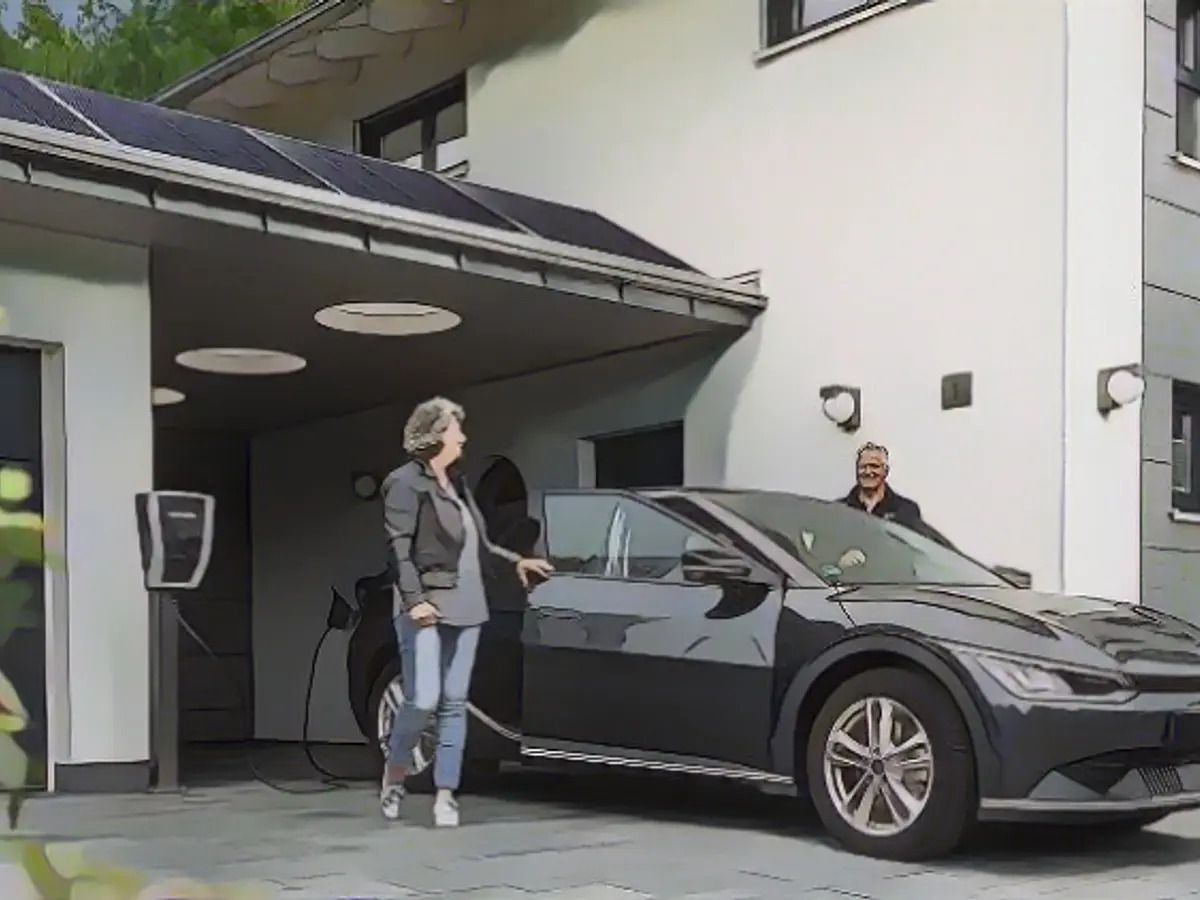When the roof refuels the car
Your own solar system can not only supply your fridge, washing machine and vacuum cleaner with electricity, but also your car. Ideally, you can then drive without energy costs.
Photovoltaics on the roof and an electric car in the garage: for homeowners, this is the ideal combination for economical and climate-friendly driving. If you want to connect power generators and consumers as intelligently as possible, there are a few points to consider. Especially when it comes to wallboxes.
Today, almost every second new solar system is combined directly with a wallbox. "The integration of a wallbox into an overall system consisting of a PV system and energy management system is one of the most frequently expressed requests from the private customer market," explains Ulrich Grimm, Technical Managing Director of wallbox manufacturer Amperfied. As a rule, so-called surplus charging is likely to be desired. This means that the household's electricity consumption is first covered by solar energy before the surplus energy is charged into the car battery. To achieve this, an energy management system (EMS) is required that recognizes the excess electricity and redirects the flow. The smart control system can be integrated directly into the wallbox or the box can use the existing solar system in the home.
Access to an EMS is therefore the most important requirement when purchasing a wallbox for surplus charging. According to an ADAC test, suitable devices are available at prices between 900 and 1700 euros. Simple chargers without an EMS function, on the other hand, are available for 500 euros or less.
If the car is to be charged as efficiently as possible, phase switching is also required. The classic 11 kW wallboxes generally use all three phases of the household current to charge the electric car battery as quickly as possible. However, this requires a minimum output of 4.2 kW, which is not always available via the solar system - for example when the sun is weak or when household energy consumption is high. In such a case, the electric car would not start charging at all or would draw all its electricity from the grid for a fee. The situation is different when the electric system switches to single-phase charging. In this case, 1.4 kW is enough to start charging.
Which wallbox is suitable for PV surplus charging?
Anyone looking for a wallbox suitable for PV surplus charging needs to do a little research. In some cases, the product name provides an initial indication, such as the "Wallbox Connect.solar" from Heidelberg subsidiary Amperfied or the "KeContact P30 PV-Edition" from Keba. In other cases, only a look at the technical data or a consultation will help.
The regular tests carried out by automobile clubs and specialist media can also help. For example, the ADAC recently tested eight PV wall boxes and found them to be good all round. The winner of the comparison was the Wattpilot Home from Fronius.
In addition to the purely electrical requirements, however, there are other points to consider. For example, many models differ in terms of equipment. If you install your box outdoors, authorization via RFID card prevents misuse; if you want to change the charging modes yourself, you need an app or web connection. In underground car parks with poor Wi-Fi or mobile phone coverage, a display can also be helpful for operation.
A few general considerations should also be made. For example, surplus charging is generally most worthwhile at midday when the sun is shining and there are few consumers in the household. However, commuter vehicles are usually only at home in the evening, and the surplus electricity is lost to the producer if there is no stationary energy storage system. Last but not least, there is the question of amortization, which must be answered on a case-by-case basis - especially if it is not just about the wallbox, but the entire installation including the solar system.
Subsidies will be available again next year: The state will grant up to 10,200 euros for the purchase of a box and photovoltaics if private individuals already own an electric car and a house. However, the funds for the current year were quickly exhausted, so advance planning can't hurt.
- With the integration of photovoltaics on the roof and an electromobile in the garage, homeowners can utilize their solar energy to charge their electric cars, reducing reliance on traditional energy sources and associated costs.
- When considering the purchase of a wallbox for surplus charging, a key requirement is access to an energy management system (EMS) that can recognize excess electricity and redirect it to the car battery, allowing for efficient charging.
- For those with an interest in solar energy and electromobility, the ADAC recently tested several wallboxes suitable for PV surplus charging, with the Wattpilot Home from Fronius emerging as the winner in their comparison.
Source: www.ntv.de








